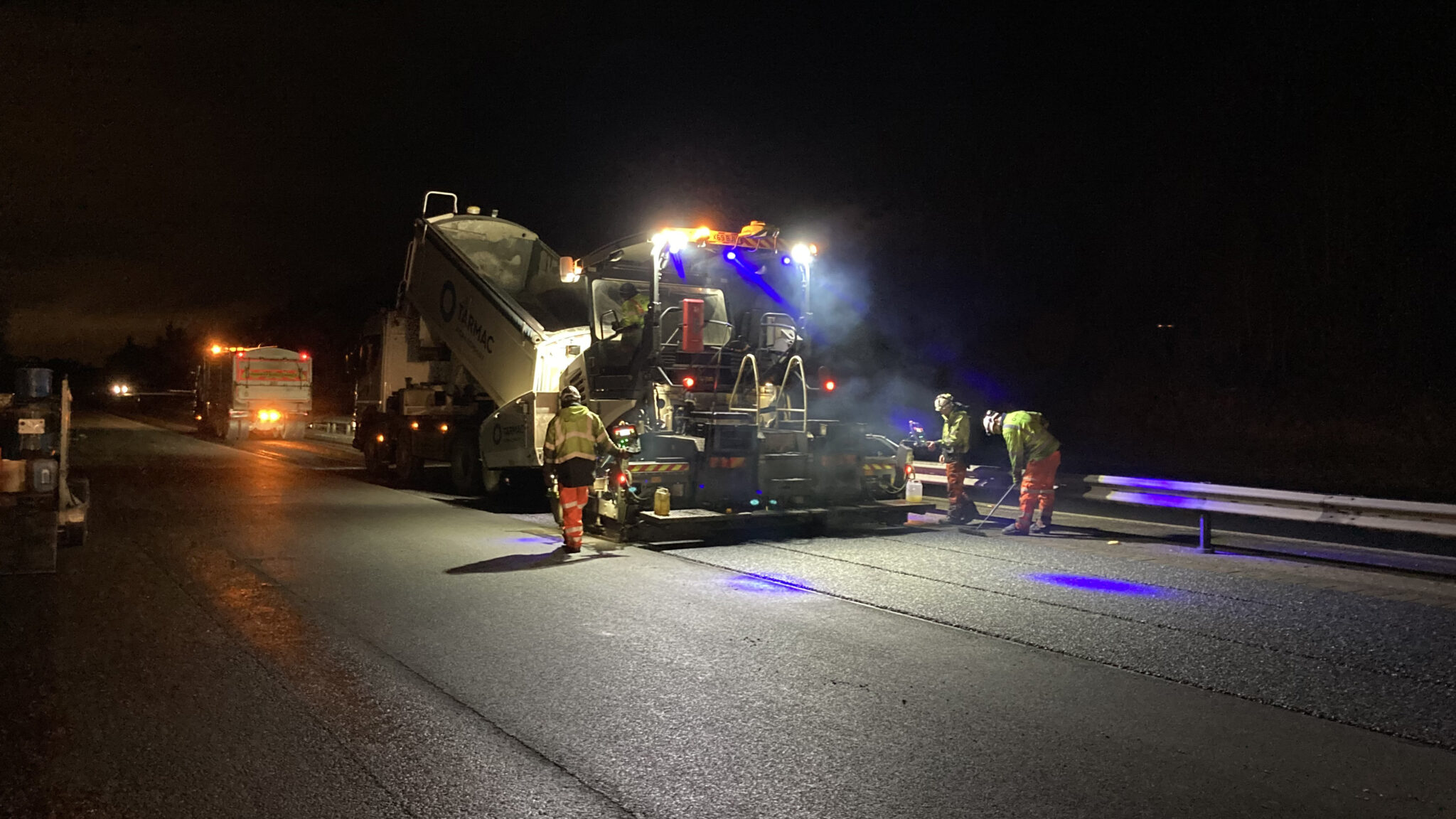

In the final quarter of 2021, BEAR Scotland has delivered resurfacing and safety improvements across a number of different routes in the South East.
Resurfacing projects spanned sections of motorways including the M8, M9, M80 and M876, and carriageway enhancements on other key routes including the A1, A68, A7, A702, A720 and A876.
Maintenance and upgrade works were completed on the A7 Skippers Wall – at the north end of Skippers Bridge, which carries the A7 over the River Esk south of Langholm – to repoint defective areas of the masonry wall, cut the vegetation above the wall and install timber fencing for the safety of personnel on future maintenance activities.
A £170,000 drainage improvement project is under way on the A68 north of Earlston, and a £450,000 filter drain replacement project is under way on the M8 westbound, from Hermiston Gait to Junction 2.
A major project to refurbish the bridge that carries the eastbound M876 over the M9 at Junction 8 Kinnaird Interchange began on 22 November, with works scheduled to take place over 23 weeks. The project will replace bridge bearings and safety barriers that have reached the end of their design life.
A new speed limit has been implemented on the A7 at Parkdaill South of Hawick. This informs drivers of the change in road characteristics as the road enters Hawick and provides a buffer zone to the new 20mph zone.
The upgrading of safety barriers on the central reservation of the M8 between Junctions 4 and 4A is ready to begin at the start of January 2022. These upgrades are predicted to take five weeks to complete.
Andy Thompson, BEAR Scotland Operating Company Representative for the South East said: “We are committed to improving journey experiences for road users. The level of investment in resurfacing and safety improvements on trunk roads in the South East of Scotland underlines that commitment.
“We will continue to focus on delivering for road users by using listening to them, using new materials and techniques and keeping them informed of what it is happening on the roads they use.”